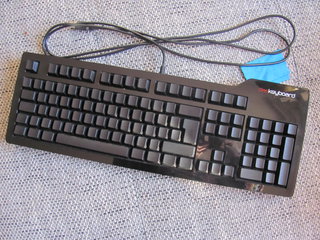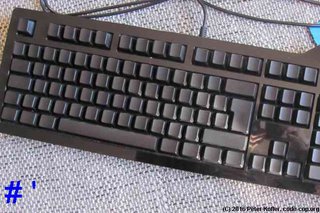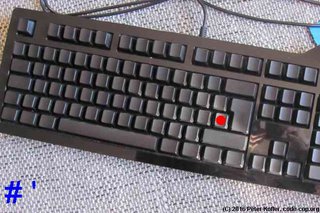 I am always interested to improve my typing performance and eager to use keyboard shortcuts. As Code Cop I mentor developers and pair with them in different environments. I need to improve my typing and shortcut-fu across different tools and use flashcards to memorise IDE shortcuts. I found that I need more visual hints to remember the positions of certain keys. I am able to touch type but I do not know the exact position of the keys consciously. This is sometimes a problem when typing passwords.
I am always interested to improve my typing performance and eager to use keyboard shortcuts. As Code Cop I mentor developers and pair with them in different environments. I need to improve my typing and shortcut-fu across different tools and use flashcards to memorise IDE shortcuts. I found that I need more visual hints to remember the positions of certain keys. I am able to touch type but I do not know the exact position of the keys consciously. This is sometimes a problem when typing passwords.Using a Blank Keyboard
Iris Classon reported that using a blank keyboard improved her touch typing accuracy. She listed measurements and statistics on her web site regarding her improvements. I own a Das Keyboard Ultimate and have used it from time to time. It is true that using it improved my touch typing accuracy, but it did not help me to "know" where the keys were.
Key Flashcards
I want to memorise the exact locations of all keys on the keyboard. This is very difficult for me, but I want to master it. As with the IDE Shortcuts I used Anki to create a deck of flashcards containing all keys on the keyboard. It starts with pictures of the blank keyboard and the name of the key in question:
 Showing the keyboard already on the front side of the flashcards - the question side - helps me visualise the location of the key. I use the TKL (tenkeyless) variant of the keyboard, ignoring the numeric keypad, to save horizontal space. When ready I advance the deck and see the key marked on the keyboard:
Showing the keyboard already on the front side of the flashcards - the question side - helps me visualise the location of the key. I use the TKL (tenkeyless) variant of the keyboard, ignoring the numeric keypad, to save horizontal space. When ready I advance the deck and see the key marked on the keyboard: The same layout on both sides of the flashcards help me keep my visual focus on the position. (Having two pictures for each card doubles the file size of the deck, which might be a problem on mobile devices running Anki but I had no issues when using the deck.) As I use German and UK layout depending on my pairing partner, I created two decks with German and UK layout respectively:
The same layout on both sides of the flashcards help me keep my visual focus on the position. (Having two pictures for each card doubles the file size of the deck, which might be a problem on mobile devices running Anki but I had no issues when using the deck.) As I use German and UK layout depending on my pairing partner, I created two decks with German and UK layout respectively:- Download Anki flashcards for 88 keys German keyboard layout and
- download Anki flashcards for 88 keys UK keyboard layout, which is very similar to US layout.
During my practise with the decks I sometimes wanted to separate letters from non letter keys. So I created even more decks:








No comments:
Post a Comment